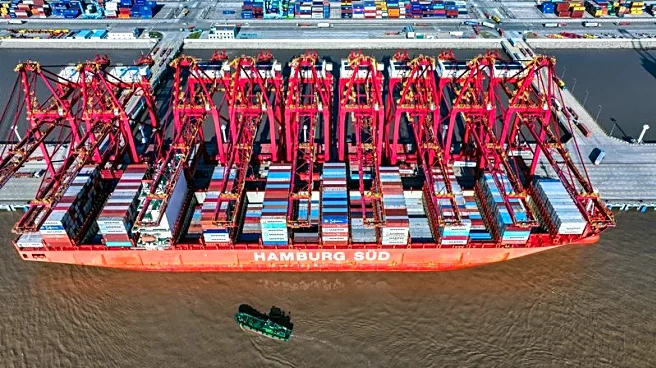What's Happening?
The North Pacific Ocean has experienced its warmest summer on record, with sea surface temperatures significantly higher than previous years. This marine heatwave, known as the 'warm blob,' has confounded climate scientists due to its intensity and duration.
The region, extending from the east coast of Asia to the west coast of North America, has seen temperatures more than 0.25°C above the previous high of 2022. While climate change is known to increase the likelihood of marine heatwaves, the current conditions exceed predictions from climate models. Factors such as weaker-than-usual winds and changes in shipping fuels are thought to contribute to the warming, revealing the full impact of human-caused climate change.
Why It's Important?
The marine heatwave in the North Pacific has significant implications for global climate patterns. It has already influenced weather on both sides of the Pacific, contributing to high summer temperatures in Japan and South Korea and storms in the US. The heatwave's impact on atmospheric rivers could lead to increased precipitation and snow in affected regions. Additionally, the warming may alter weather patterns in Europe, potentially leading to colder early winters due to teleconnections. Understanding these dynamics is crucial for improving long-term weather forecasting and developing strategies to mitigate the impacts of climate change.
What's Next?
The ongoing marine heatwave is expected to continue influencing weather patterns in the coming months. Researchers are closely monitoring the situation to better understand the interplay between the North Pacific's heatwave and other climate drivers, such as La Niña conditions in the tropical Pacific. These factors will collectively shape weather outcomes in regions like the UK and Europe, where colder early winters may be followed by milder conditions later. Continued research and analysis are necessary to refine climate models and improve predictions of future climate scenarios.
Beyond the Headlines
The heatwave highlights the complex interactions between human activities and natural climate variability. Efforts to reduce air pollution and changes in shipping fuels have unintended consequences, revealing the full extent of human impact on climate. This underscores the need for comprehensive climate policies that consider both direct and indirect effects of emissions reductions. The situation also emphasizes the importance of international cooperation in addressing global climate challenges.














